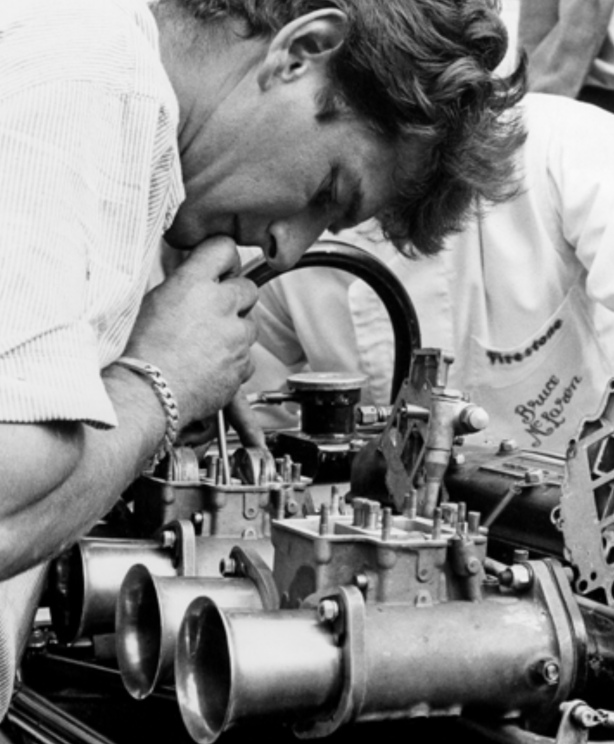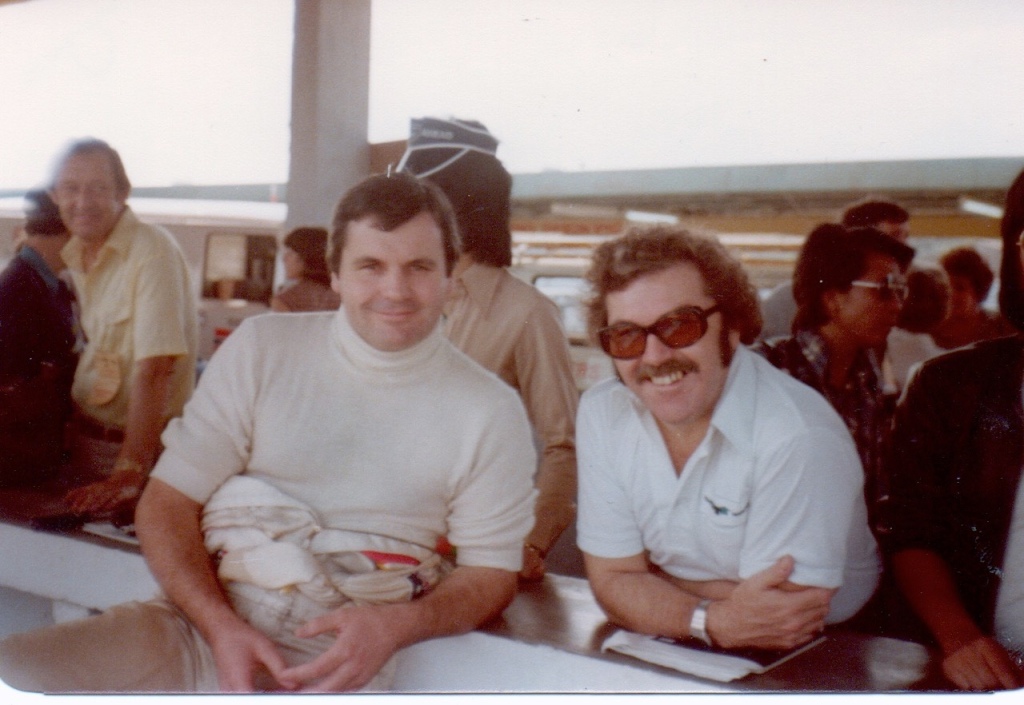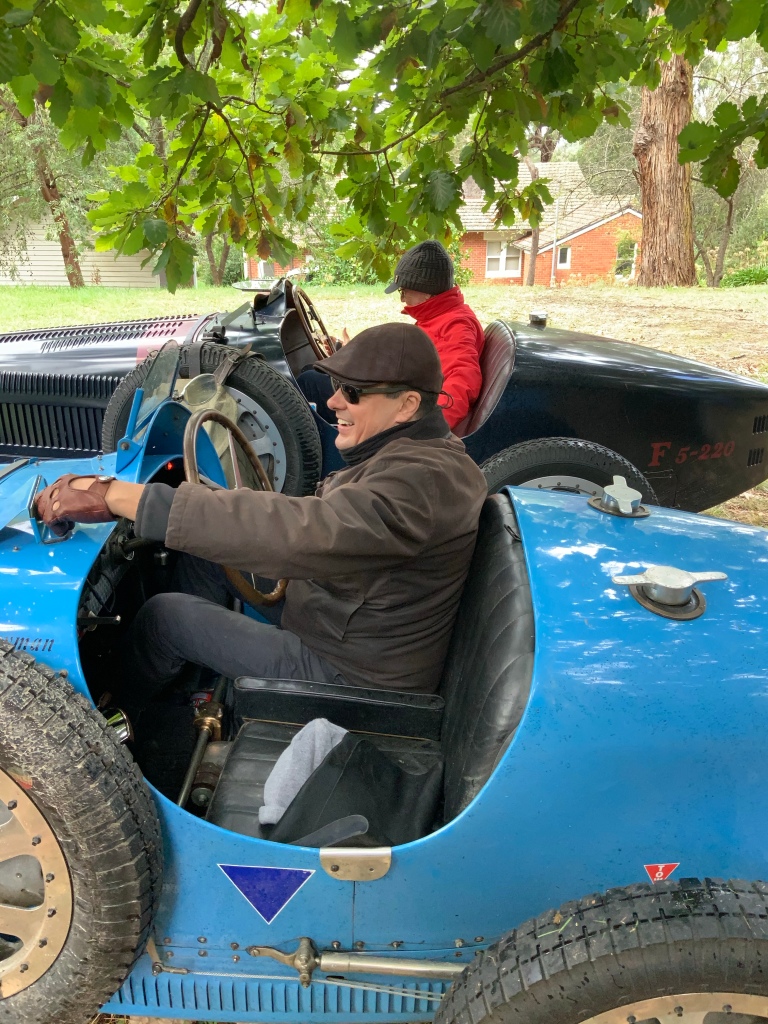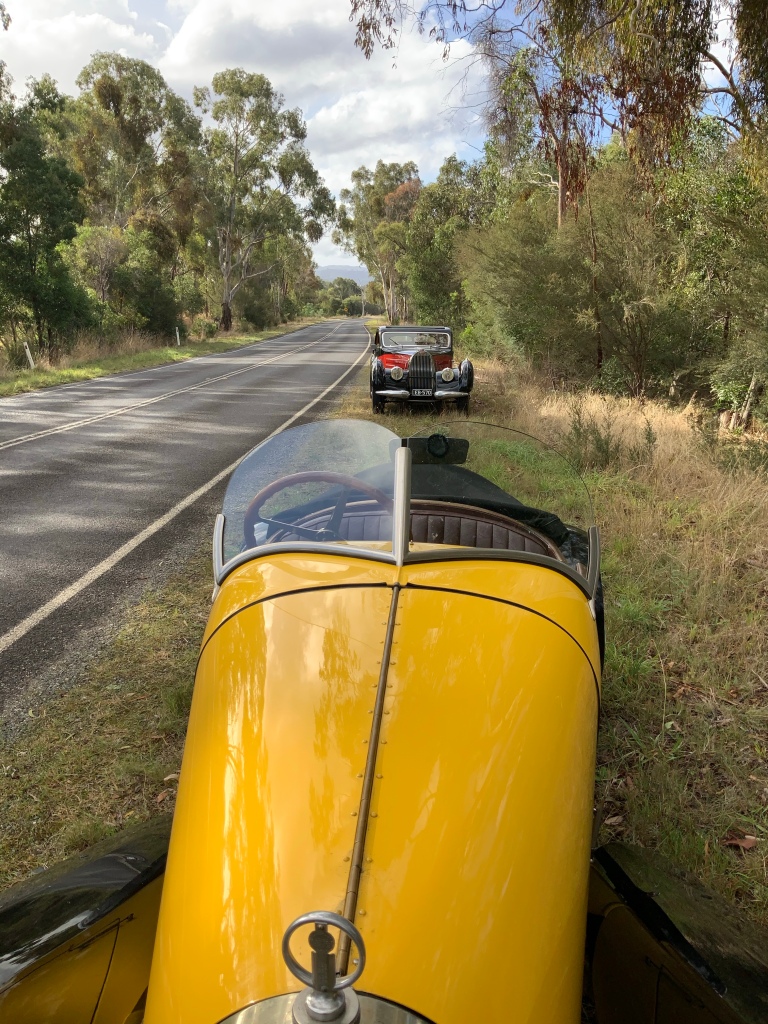
After World War II, interest in gas-turbine power was intense, who would be the first automotive manufacturer to harness engines which had revolutionised aviation?
I chanced upon this topic searching for information about Carlo Salamano, the pre-war Fiat Grand Prix driver and winner a while ago researching an article I published in 2019 about Fiat’s twenties GP cars, see here;
Fiat 806 GP 1927…
More recently I came across this Australian ‘Wheels’ magazine cover, the spark to ignite my interest in writing about Fiat’s amazing turbine powered car came from those two sources. The difficulty of this topic for me are the technicalities of these engines for my ‘humanities’ brain, but Karl Ludvigsen has come to the rescue in a beautifully written Hemmings article titled ‘Turbine Speed with Style’. Initially I thought I would just use the magazine cover and a link to Karl’s article but in 4,000 words he has only two piccies- not enough for us. So…
I’ve truncated his article in part- and as you will see, very substantively quoted him especially in relation to the technical elements, quotation marks will ensure you can see when it’s one of motorings finest writers verbatim and what is me truncating and in some cases expanding upon his original prose. The full Hemmings piece is here; https://www.hemmings.com/blog/article/turbine-speed-with-style/
Off we go.
In March 1948 Rover announced that it was working on a gas turbine for cars making use of wartime intellectual property gained while building some of Frank Whittle’s first jet engines.
Karl Ludvigsen wrote that “The Autocar published a shrewd speculative drawing of the gas-turbine car of the future, a provocation if there ever was one. Several other gas-turbine programs dated their launches to 1948. One was that of General Motors, followed in 1949 by Chrysler. Another for whom 1948 was a decisive year was Italy’s Fiat. Proud of its great engineering heritage and eager to exploit new technologies, Fiat too would assess the turbine’s potential.”
“I was afraid that in the race for progress that had been speeded up by the new wartime technologies, we might well have been overtaken by others,” recalled the brilliant Dante Giacosa, technical director of Fiat’s automobile arm since 1945. “I remembered what had happened to piston engines in aviation, suddenly superseded by jets.” It was Giacosa’s role to protect the future of Fiat by exploiting the opportunity or discounting it as a ‘blind alley’ in automotive terms.
“Fiat weren’t starting from scratch, one subsidiary was producing the de Havilland Ghost jet engine under license, another was building large industrial gas turbines. However, there were two reasons for not troubling these experts with Fiat’s turbine-car ambitions. Giacosa determined not to involve those with some expertise as they were already fully committed with aeronautical development work, he wanted to ‘see for himself’ and he wanted to develop the technology without undue pressure from inside the huge Fiat organisation- keep his and his team’s heads down until they were good and ready.”
“Vittorio Bellicardi was chosen by Giacosa to lead the project, together with a three-man team he commenced studies of the state of the turbine art. They examined the latest in aviation-turbine design, compressors, constant-flow combustors, red-hot turbines and high-speed shafts and bearings to name a few. ‘A firm grasp of the theory of fluid dynamics was needed to cope with the unique conditions prevailing inside these engines” Ludvigsen wrote.

Dante Giacosa in the mid-sixties (unattributed)

Fiat 8001 Turbina general layout (unattributed)
Work began in September 1950 on an engine which Giacosa said “envisaged the turbine as an integral part of the automobile” rather than a stand-alone unit which was then hooked up to a car, which was the direction of some other competitors. Fiat’s project 8001 combined its power generator and its final-drive gearing into a single assembly purpose-built for car use.
Virgilio Borsattino and a colleague then commenced design of the engine whilst Giacosa considered test equipment: “We had to take measurements of the behavior of air and gases passing through the various sections of the engine, perfect the combustion chambers and the shape of the turbine blades, the choke tubes of the two-stage compressor and the turbine, the injection mechanism, regulator and so forth. We also had to make sure that the impellers turning at 30,000 rpm could stand the centrifugal strain. This meant we needed a pit inside which we could set them spinning until breaking point was reached, without danger to the observers.”
The research work promised to be noisy and expensive but Bellicardi found a solution right under their noses at the top of Fiat’s famous, fabulous five-story Lingotto factory in Turin. An isolated sixth-floor work area, ‘Traversa D’, wasn’t being used so Bellicardi struck a cheap rent deal which was billed to Giacosa’s car-development unit. Using surplus equipment discarded by other parts of the empire they updated their laboratories with all of the specialist items they needed- with no mention of exotic gas turbines.
By May 1951, Project 8001 turbine drawings were allocated to Fiat’s workshops for fabrication, the assembly drawing of the complete unit was dated November 8, 1951. It showed a power unit unique amongst automotive turbines in terms of its integration with the final drive and differential as well as its layout, “which was not unlike some of the early post-war aviation gas turbines”.
“One of the two basic elements of most automotive gas turbines is a gas generator that has a turbine wheel or wheels that drive a compressor, which delivers air to a combustor. Hot gas from the combustor drives the turbine that keeps the compressor going. There’s plenty of gas left over to drive the other basic element, another turbine wheel called the power turbine, which drives the car. When starting up, the power turbine is at rest until it starts to turn under the impact of the hot exhaust from the gas generator. Fiat used this method, in which the relationship between gas generator and power turbine acts as an automatic transmission, in its 8001.” Karl wrote.
In general arrangement, the Fiat turbine had similarities to a Rolls-Royce aviation turboprop unit, the Dart. Exploiting its wartime work on Merlin engine superchargers, Rolls used a two-stage centrifugal compressor in its Dart. This gave a high pressure ratio, the equivalent of a piston engine’s compression ratio. Although they faced their paired impeller entries to the rear instead of forward, the Fiat engineers used a similar compressor in the 8001 to get an exceptionally high pressure ratio of 7.0:1 for maximum performance and efficiency.

Caselle Airport, Turin 23 April 1954 (Fiat)

Turbina engine- if it looks heavy it is, circa 570 pounds. Output circa 200bhp according to ‘Wheels’ in-period but not more than 150bhp used. A turbine speed of 22,000 rpm produced a road speed of 120mph (Fiat)
“While an aviation turbine like the Dart had multiple combustion chambers around its shaft, the Fiat had three at the top and sides of its central shafts. Three were, in fact, two more than most automotive turbines. Triple burners were chosen by the Fiat team in the belief that they would give higher efficiency. Angling inward toward the rear of the engine, the combustors required a long shaft from the compressor to the pair of turbine wheels that drove it. Impressively, Fiat itself made all these vital rotating parts of the 8001, including the forged-aluminum compressor wheels and the turbines, which had blades of Jessups G32 alloy copy-machined individually and attached by fir-tree joints to wheels of similar alloy.”
“At the engine’s extreme rear, just inside its circular exhaust duct, was its power turbine. This drove an output shaft that went all the way to the front of the 8001 through its hollow compressor shaft. Both coaxial shafts were made in two parts joined by splined sleeves. From there it drove a set of reduction gears that went down to a shaft that ran backward, through another pair of gears, to a spiral-drive ring and pinion and the differential. The main reduction gears were duplicated on the driven shaft to provide two subtly different overall ratios, selected by a dog clutch when the car was at rest, for experimental purposes.”
“The complete unit had a dry-sump lubrication system with two scavenge pumps and one pressure pump. Delivery from the latter was high-pressure to all the engine’s plain bearings and gear trains. A reducer cut the pressure back for delivery to the high-speed anti-friction bearings. The oil reservoir was behind the passenger seat, and an oil cooler was in the nose, fed by the upper portion of the car’s air inlet. Engine output was controlled by a variable fuel-metering valve, while starting was by a truck-type starter motor on a 24-volt system. Firing up at 5,000 rpm, the gas generator became self-sustaining at 10,000 rpm.”
Back at Lingotto’s Traversa D, Bellicardi and Freilino, the engineer charged with running the tests, subjected all the engine’s key components to trials in their various rigs in January 1953, they were able to run the complete unit. Weighing 570 pounds, it was designed to be rubber-mounted at four points of a chassis and installed only in a rear-engined car, those with a keen sense of Fiat history will recall that Fiat were on track for the launch of the 600 in 1955.
“Meanwhile, other gas-turbine efforts were surfacing throughout the world. In March 1950, Rover demonstrated the world’s first turbine-powered car, which in 1952 was driven to the first gas-turbine speed record of 152.9 mph. In 1951, French truck maker Laffly showed a chassis powered by a Turbomeca turbine, while in the same year, a 36-ton Kenworth semi-trailer rig was completing a test with Boeing turbine power. Closer to home for Fiat, at Paris in October 1952, a handsome turbine-powered sports coupe, the SOCEMA-Gregoire, was placed on show.”

Paris Car Show October 1954 (Getty)

(smcars.net)
Fiat were not alone in their exploration! In 1953 more substantial funding for the 8001 project was provided by senior management. Design work on the car itself began led by Oscar Montabone with the ongoing support of Bellicardi. The type of car was determined by the powerful engine. Whilst a low-power turbine would be in line with Fiat’s mainstream cars, the bigger the turbines the better in that that the necessary clearances between its rotating parts and static walls become proportionally smaller in relation to the size of the engine. Large clearances mean loss of efficiency. With this in mind the engineers scaled the 8001 to deliver a nominal 200bhp – about the same as Ferrari’s contemporary 4.1-litre Type 342 America! And so an exciting sportscar it was to be.
“Fiat was developing its V8-engined 8V sportscar, whose new independent suspension- a parallel-wishbone design with a single upper link actuating a coil spring/damper inside an oil-filled housing was lifted for use in each corner of the 8001 chassis. Roll bars were used at front and rear, drum brakes were Fiat ‘FB’ pattern with beautiful Borrani wire wheels wearing Pirelli’s 6.00 x 16 Stelvio Corsa tires.”
“Giacosa’s chassis was a multi-tubular steel structure reminiscent of his Cisitalia sports cars of the 1940s. Of semi-space-frame design with truss-braced side members, two 13-gallon tanks were attached to carry the car’s kerosene. The turbine was in the rear, while up front three six-volt batteries were carried on each side, adding weight which increased the car’s polar moment of inertia and therefore its stability. The lower section of the nose inlet delivered air to a central tunnel that fed it to the hungry compressor. The car’s wheelbase ‘was no more than the classic 2,400mm, 94.5 inches, the same as Fiat’s front-engined 8V sports car. The track was also similar to the 8V’s at 51.0 inches.”

Fiat 8V (Fiat)

The lucky man chosen to style the 8001 was Fabio Luigi Rapi. As much an engineer as stylist, Rapi had been vice director to Giacosa since 1949 and in 1952 took over responsibility for special coachwork. His CV included experience of powerful rear-engined cars with Isotta Fraschini, for whom he styled the marvellous 8C Monterosa. Its rear mounted 3.4-litre V8 gave 120bhp and bettered 100mph.
The sports version of Isotta’s Monterosa used substantial stabilising fins, which Rapi used in his 8001 two-seater coupe. It had chrome trim around its nose and along its flanks, a deeply curved windscreen and had side windows fixed in rear-hinged doors that curved into the roof to aid access and egress.
“Although the 8001’s rear wheels were designed to be enclosed, the car was styled to look good with its pants removed. Its high, squared fins were functional for stability enhancement at the speeds of which it would be capable. That its drag would be low was suggested by tests of a one-fifth-size model in the Turin Polytechnic’s tunnel that showed a drag coefficient of only Cd=0.14. A fitting touch was a chrome-ringed central exhaust for the turbine, emblematic of the jet age. Completing the ensemble was a red-on-white paint scheme as extroverted as the automobile itself. Its overall dimensions were 172.0 inches in length, 63.4 inches wide and 49.4 inches in height. For a car considered to be purely experimental, no need was envisaged for headlamps or running lamps.”
The cars test nature was expressed in its interior which had only the basics. The driver had two pedals, one to go and one to stop but faced a bank of instruments, many of which were there for technical observers. There were two tachometers, one for the gas generator and the other for the power turbine. Temperature readings were given for oil, bearings and combustion gases, while pressures were shown for the fuel and for the engine’s two lubrication circuits.

(smcars.net)

Carlo Salamano eases himself into the Turbina cockpit at Caselle Airport 23 April 1954
Work on the 8001 proceeded over the 1953-54 winter. By the end of February, the chassis was completed and handed to the in-house carrozzeria for body fabrication. On March 15th, its final engine was installed, and on April 10th, the car was considered completed. On the 14th, it was wheeled out of Traversa D onto the Lingotto rooftop test track. Settling himself behind its Nardi wheel was none other than pre-war Fiat Grand Prix winner Carlo Salamano, the by then veteran tester whom Giacosa described as “the conscience of Fiat.”
“That first test on April 14th had its humorous aspect. Salamano joked that since he had no idea how the car would react when he pressed the throttle (this being a completely new form of motive power), he should wear a parachute while testing it on a track 100 feet up in the air! In any event, the test went smoothly; the car went through its 15-second starting sequence flawlessly and, accompanied by the doughty Freilino, Salamano took it for baptismal laps of Lingotto’s rooftop track.”
“Turin’s automobile show opened on April 21, the turbine car had the potential to be a huge sensation for Fiat. It was only a rumor when the Italian president opened the show at 10:00 a.m. that Wednesday, but on Thursday evening, the closely held secret was revealed by Bono and Giacosa in talks at a meeting of Turin’s Rotary Club. A more appropriate venue could hardly be imagined.”
“By Friday the 23rd, the freak April snows had melted away, and Turin’s Caselle Airport was bathed in sun as Fiat executives and journalists convened to see the 8001 in the flesh and in action. Two days earlier, Salamano had tested it there and posed for press photos while finding all in order. Nevertheless, the turbine’s settings were conservative, power being held to some 150hp and power-turbine revs to 22,000, equivalent to 120 mph. The gas generator was running to 27,000 rpm, 10 percent less than its planned maximum.”
Fiat’s unveiling of its Turbina was impeccable in its timing in that It was the first public demonstration of a turbine-powered car in continental Europe- the SOCEMA-Gregoire of 1952 was never shown in operation. Fiat were the second manufacturer to display a running gas-turbine car. GM first ran its Firebird I in autumn 1953 but the media weren’t invited, while Chrysler’s first turbine-engined Plymouth, displayed in New York on April 7-11 of 1954, waited until June 16 for its running debut before the press and public. In July 1955 Austin demonstrated its first turbine-installed in a Sheerline.

Mauri Rose, thrice Indy winner pilots the GM Firebird 1 on a deserted road in the Arizona desert. The ‘engineering and styling exercise’ was potent having a circa 370 horsepower ‘Whirlfire Turbo-Power’ turbine engine was located in the back of the car and drove the wheels through a two speed gearbox. Rose reached 100 mph- more than that was impossible due to tyre traction problems- the tyres could not cope with the torque (GM)

Salamano and the Fiat CEO?, Caselle amongst an admiring throng of press and Fiat staff (unattributed)
“No one could take more satisfaction from the Turbina’s demonstration at Caselle, and its appearance on the Turin show floor the next day, than Giacosa. ‘It was a festive occasion for me and my co-workers’, he said, “with the shrill whistling of the engine providing the high point of a bright spring day…a festive throng of the leading representatives of the city, journalists and Fiat executives, from the president down…an event that caused quite a stir all over the world.”
“With Fiat justifiably in the limelight, Giacosa could reflect on this spectacular result of his daring decision six years earlier to begin research on a radical new prime mover. Most important to Giacosa, however, was that the Turbina showed “that the motor vehicle design section was also capable of producing a small turbine, that our design engineers were on a par with those in the aeronautical division and, if needed, they could enable Fiat to compete with any foreign manufacturers in the small turbine field. The automobile was there as a concrete testimony to the abilities of the team of young men who had thrown themselves with enthusiasm into this far from easy task. For Fiat, it was precious experience gained. It showed that the turbine was not yet suited to the private automobile-nor may ever become so-but it should still be thoroughly perfected and studied for other uses.”
“After the hubbub of Turin in April 1954 had abated, Giacosa’s engineers got down to serious development of their 8001 turbine. They found many flaws. The compressor housing, originally of silicon-alloyed aluminum, deformed at high heat and rubbed against the rotating impellers. A change to an exotic magnesium-zirconium alloy gave the added strength needed without increasing the housing’s weight. The power-turbine casing had to be redesigned to keep it from sagging under its own weight. Key ball bearings were fitted with little centrifugal exhaust pumps to accelerate the flow of cooling oil through them. Forged brass cages and silver-plated surfaces were needed to extend ball-bearing life.”
“With compressor efficiency crucial to turbine performance, Bellicardi’s team built and tested many different configurations and sizes of the impellers and their connecting diffusers and ducting. Combustion chambers too were redesigned and retested. Stiffening components allowed closer running clearances throughout the engine, a boon to better performance. The ability of the gas generator to accelerate from its 10,000-rpm idle to full 30,000 rpm-a key index of engine response-was measured at five to six seconds, with most of the time taken to reach 20,000.”

(Italianways)

Caselle Airport, 23 April 1954 (Fiat)
“The engineers’ efforts over several years spectacularly improved the 8001’s performance. It now attained its target 200hp at 18,000 power-turbine rpm with the gas generator running at 29,000 rpm. With the gas generator at 30,500 rpm and the power turbine at 20,000, output rose to 295hp. At 29,000 power-turbine rpm, it was still producing 250hp.”
“This was impressive output. Fuel consumption was heavy, on the order of twice that of a comparable piston engine, but that didn’t trouble Carlo Salamano, who saw a chance for some glory behind the wheel late in his career. With that kind of power, he was sure, the Turbina would easily break the Rover turbine’s speed record of 152.9 mph, dating from 1952. He urged Giacosa to prepare the Turbina for an attempt over the flying kilometer.”
“In September 1956, they were getting ready to attack the record when they heard bad news from Utah. At Bonneville, Frenchman Jean Hebert set a new turbine-powered record at 191.8 mph in Renault’s “Etoile Filante.” Power from its Turbomeca Turmo I engine was akin to the Fiat’s: 270hp at 28,000 rpm. The car, however, was a purpose-built record-breaker with a sleek, low, single-seater body. The Turbina had no chance of matching its speed, let alone exceeding it.”
Though it never went record-breaking, Fiat’s Turbina did make more public appearances. It was tested at Monza in 1954 and then, on June 6th, turned laps of honor before a non-championship Grand Prix at the Castelfusano circuit on the coast at Ostia, near Rome. The Eternal City’s mayor joined other dignitaries to see and hear what Fiat had wrought. Now the Turbina rests in Fiat’s collection, occasionally loaned to exhibitions. It deserves to be accompanied by a recording of its engine’s keening whine, that exciting sound of the future that enraptured us all half a century ago.
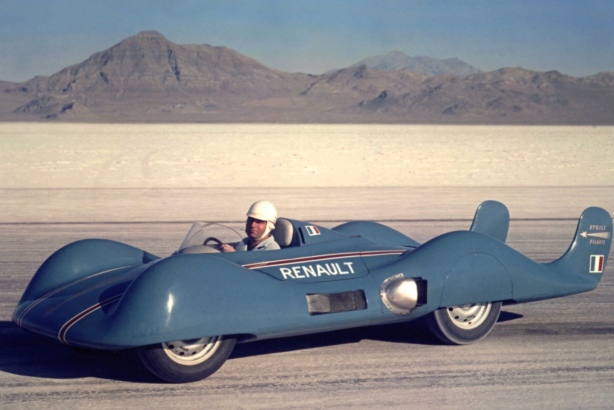
Renault Etoile Filante (Shooting Star) on the Bonneville Salt Flats before setting a Land Speed Record of 308.85 km/h on 5 September 1956- driver/engineer Jean Hebert is at the wheel (Renault)

Contemporary automotive turbine perspective in September 1954…
It is interesting to look at the Wheels article, it has no writers byline unfortunately, and the future of turbine powered cars as anticipated then.
Wheels predicted “Turbine cars will be on the market in quantity from six to ten years. Commercial vehicles may be here in less’. Had the initial pioneers, the Rover Company of England had the backing of their government or the assets of General Motors they would have had as substantial lead now over the rest of the world in ground turbines as Britain had with jet aircraft in the air.”
Initially the technology would be applied to large cars from the US, ‘wealthy mens waggons‘ because the efficiency losses in small turbines indicated the industry would commence with bigger cars in which fuel economy is not important.
Advantages touted after a summary of the initiatives of Rover, Chrysler, GM and Fiat were outlined included simple transmissions with no gearbox, smooth vibrationless running, simple lubrication and practically no oil consumption, small dimensions and practically no oil consumption, small dimensions and low weight, no cooling system and easy starting regardless of weather conditions.
The challenges the technology at the time needed to solve were primarily complex metallurgical problems of service, manufacturing difficulties and the need for mass production to much tighter tolerances than was typical then.
It was thought that piston engine evolution to ‘fight back’ may focus on fuel injection and two-stroke diesels, both of which happened and of course the continual refinement of our old favourite has ensured its omnipotence to the present at least…
Etcetera…

(Italianways)

(Italianways)

(Italianways)

(Italianways)

(Italianways)

(Italianways)

(Italianways)
Credits…
‘Turbine Speed with Style’ by Karl Ludvigsen in Hemmings, smcars.net, Getty Images- Louis Klemantaski, Italianways
Tailpiece…

(Getty)
Mass production of the Turbina after all!
Finito…

















